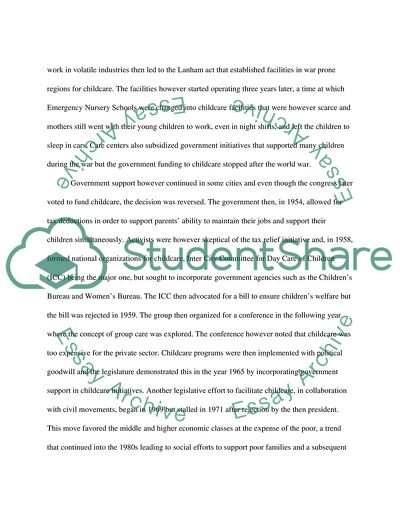History of childcare in the United States Book Report/Review. Retrieved from https://studentshare.org/history/1614477-history-of-childcare-in-the-united-states
History of Childcare in the United States Book Report/Review. https://studentshare.org/history/1614477-history-of-childcare-in-the-united-states.


